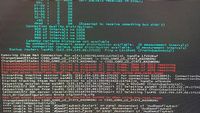„Breakthrough Technology” From Ratchet & Clank on PS5 Could Work on PS3
The founder of TT Games shows how Sony may have misled gamers, with a key effect from Ratchet & Clank: Rift Apart being possible even on the PlayStation 3.
1

Ratchet & Clank: Rift Apart is one of the flagship titles of the PlayStation 5 console, and it would seem that it couldn't have been made without the SSD technology present in Sony's new console. The game's devs and Sony themselves have repeatedly stressed how crucial this technology is. Very fast data transfers were to be necessary for the main character's rapid transition between worlds in rift sequences. It looks very impressive and surprisingly smooth. However, it turns out that players may have been misled and the effect could be achieved even on PlayStation 3.
Jon Burton, programmer and founder of Traveller's Tales and TT Games (known for the Lego series), said on his YouTube channel Coding Secrets that smooth rift transition to the next level is fairly easy to achieve without SSD technology, just by using some programming tricks and loading the level contents into the console's memory in the correct order. Using the example of pocket dimensions from the game shows that these are small locations with limited action, filled with simpler and repeatable objects. These types of levels take up much less memory, and the effect of going through a rift to such a level does not require very fast SSD transfers. The same goes, according to Burton, with the rest of the rifts. The transition effect is a kind of ordinary cut-scene, during which you can quickly load more data.
According to Burton he achieved a similar effect in a game released on PlayStation 3, Lego Star Wars 3 (2011), where the player could instantly switch between characters in completely different locations. Leaving aside the question of how smoothly a game can be played or the quality of the graphics on hardware without an SSD, Jon Burton's arguments show how, with the help of optimisation and programming tricks, it is possible to achieve similar results on different hardware platforms.
1
Latest News
- „It's a brave decision.” Former Rockstar director praises Larian for walking away from Baldur's Gate
- Pathfinder devs are working on their own launcher, but some players are not happy about that
- Game of the Year 2025 devs underestimated their work. „Most of us were aiming at around 80”
- Steam has revealed the biggest winners of 2025. Game of the Year didn't make the list
- Clair Obscur players see „inspiration” from Game of the Year 2025 in a new title from China, much to the annoyance of jRPG fans


